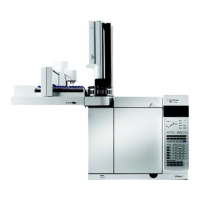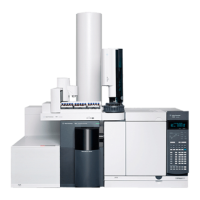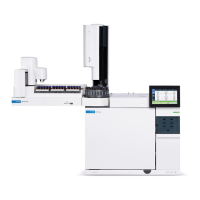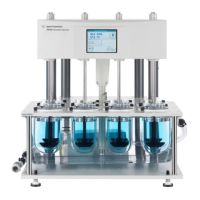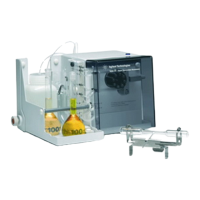Chromatographic Symptoms 3
Agilent 7890 Series Troubleshooting 57
Noisy Detector, Including Wander, Drift, and Baseline Spikes
Noise should be measured under “normal” operating conditions,
with a column connected and carrier gas on. FID electrometer
noise or drift (flame off), for instance, will not provide much
indication of how the detector will perform in practice because
major sources of noise are not included in this measurement.
Noise typically has a high frequency component (electronic in
origin) and lower frequency components that are referred to as
wander and drift.
Wander is random in direction but at a lower frequency than the
short-term electronic noise. Long-term noise (drift) is a
monotonic change in signal over a period that is long compared
to the wander and electronic noise (see below). Terms like
“short” and “long” are relative to the width of the
chromatographic peaks. In general, one should measure noise
over a period of time that is about 10 times the peak width at
half height (or 10 times the area/height ratio for a Gaussian
peak). Measuring for longer times can over-estimate noise;
shorter times may underestimate noise.
Noisy baseline
A noisy baseline or high detector output can indicate leaks,
contamination, or electrical problems. Some noise is inevitable
with any detector, although high attenuations can mask it. Since
noise limits useful detector sensitivity, it should be minimized.
• For all detectors, check for leaks at the column fittings. (See
“Checking for Leaks”.)
• For the FID, see To Isolate the Cause of FID Noise.
• For the TCD, verify data collection at
5 Hz.
Total noise
Long-term noise (drift)
Wander
Short-term noise

